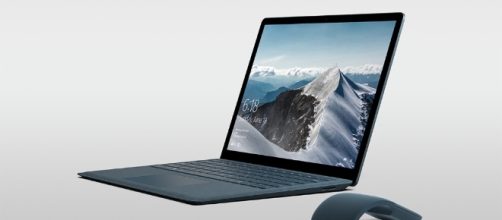Near on two decades into the 21st Century, computers have really become so much more integrated into education. The call of the day is for schools from kindergarten to 12th Grade to be able to afford computer hardware and software for both students and teachers. This niche has been filled in the past few years by Apple’s MacBook versions, which were later joined by Google and its Chrome-books.
Now however, Microsoft may be ready to make that education-comp contest into a three-way by introducing two new products. First is the software component, in the form of the new Windows 10 S basic operating system.
Second is the new Microsoft Surface laptop, with Windows 10 S a competitive price that could go toe to toe with Apple’s and Google’s own.
Education focus
This was the general gist of the New York tech event held by Microsoft May 2, where company CEO Satya Nadella introduced the new educationally-geared direction for their latest product in the Surface line. The Surface laptop is touted as the new best friend for higher-education students and educators, thanks to its initial price of $999. This puts it on parity with Apple’s educational offering of the same-priced MacBook Air and is cheaper than the $1,299 MacBook Pro. It's a bad time for Apple not to have any upgrades announced for the Pro.
Nadella spoke of Microsoft’s stellar history tied to computer education, pointing out how a great many institutions at the turn of the millennium had Microsoft Windows as the operating system of choice for their school computers, thus having a lot of students who “grew” up using Microsoft tools such as the MS Office suite for their word processing, spreadsheet calculations and so forth.
This tradition of sorts is to be carried on by Windows 10 S, a stripped-down version of the current OS version that is set to butt heads with the Chrome OS used by Google’s Chrome-books.
Security in simplicity
Microsoft’s Windows 10 S is a Cloud-based operating system that helps keep computing at an educational bent by limiting the types of software it can download for use. Only stuff from the online Windows Store, like the Office suite, can be downloaded and used in Windows 10 S. Their one draw over the rival Chrome OS is that the applications it uses are full desktop versions rather than mobile apps.
Should a student or educator attempt to download or install software that’s not listed in the Windows Store, they’ll be warned that the app is “unverified,” a stumbling block that can only be removed by switching the OS from Windows 10 S to Windows 10 Pro.
In addition to the new Surface laptop, Microsoft will be making Windows 10 S available to educational PCs and laptops manufactured by their industry partners like Acer, Dell, and Samsung.


